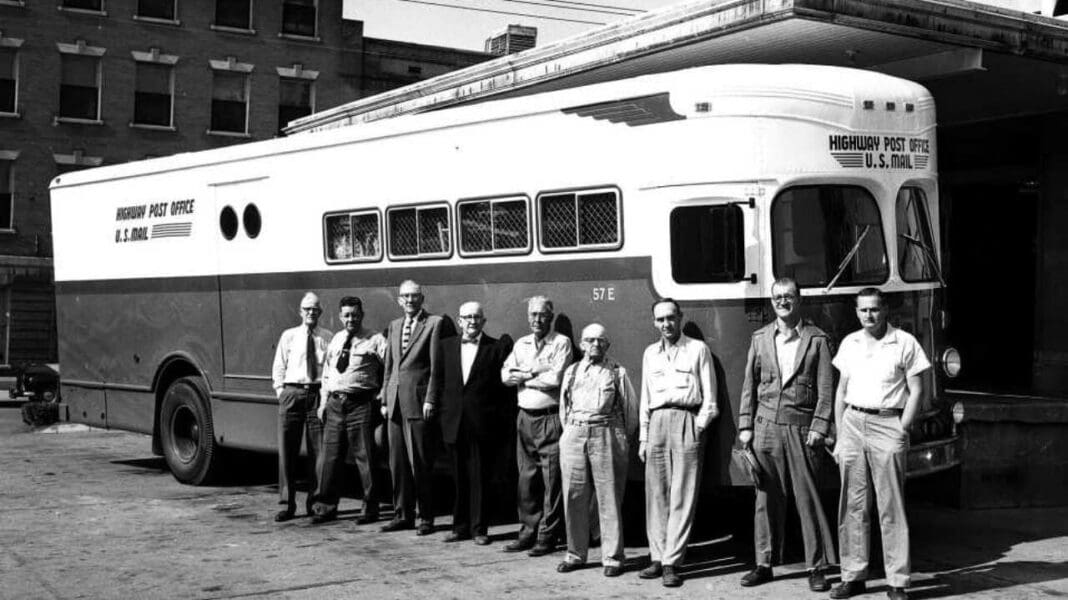Since Benjamin Franklin was appointed our first postmaster general (PMG), our institution has dedicated itself to meeting the mailing needs of the American public. Our current Delivering for America® transformation plan is one of our most profound and extensive efforts. But it’s pertinent to note that it’s a continuation of close to 250 years of evolution to meet the ever-changing needs of a constantly growing nation.
There are many examples of our innovation and commitment to meeting our mission, but I think one of our lesser-known successes — the Highway Post Office (HPO) — provides valuable insight into how America’s postal service is always looking to improve its performance, reliability and reach.
HPO buses were the answer to a predicament that arose almost a century ago as the railways reduced service on unprofitable routes. With automobile use on the rise, this made good business sense for the railroads but dismantled an essential part of the postal infrastructure. Mail service to communities across the country would be drastically affected.
Something had to be done and in the early 1930s, then-PMG Walter Brown called on Congress to pass legislation for an automotive alternative to the established Railway Post Office system. That request failed, but when the U.S. Post Office Department under PMG James Farley tried again in the late 1930s, the reception was much more favorable. On July 11, 1940, President Franklin D. Roosevelt signed into law the bill creating the Highway Post Office.
With the Post Office Department being given the requisite legal authority, it pushed ahead to determine the best routes and the parameters for service. It was quickly determined that converted buses would be perfect for the job and that routes should be at most 170 miles one way so that every trip could be completed in a day. Each bus would serve about two dozen Post Offices directly and hundreds more indirectly, and all mail would be sorted inside the bus. Like Railway Post Offices, the vehicles would be operated by contract drivers, but postal clerks would perform the sorting and delivery.
The two clerks and one clerk-in-charge typically allocated to each bus trip worked in an environment similar to their colleagues assigned to railways postal cars, albeit with the addition of security screens on the windows. And like their railway compatriots, these HPO workers were armed.
The inaugural route for the distinctive red, white and blue-painted HPO buses operated Feb. 10, 1941, carrying some 114,000 pieces of mail on a round trip from Washington, DC, to Harrisonburg, VA. It was a great success, but the expansion of HPOs was delayed due to the war effort. The HPO program began again in earnest in 1946, eventually growing to 200 routes serving communities in almost every state.
These buses were critical in meeting the needs of a nation in change. As the highway system expanded in postwar America, new communities were cropping up where farms once stood. The buses became fundamental in serving a country no longer beholden to the railway network for food and goods and bridged an important period in our nation’s history and our own legacy as America modernized and suburbanized.
By the 1960s, it was clear that the postal system had to shift to accommodate this new demographic landscape and that is when we saw the move to a centralized processing system that focused on large-scale sorting, automation, increased use of carrier delivery and deployment of the ZIP Code™. The buses were no longer needed and on June 30, 1974, the HPO network was shuttered.
The Highway Post Office reminds us that the world is always changing and that the Postal Service must always look to the future to ensure it meets its obligation for universal service. I’m happy to have a front-row seat for this incredible institution’s latest evolution and I can’t wait to see the results.
Stephen Kochersperger
USPS Historian & Corporate Information Services Manager



